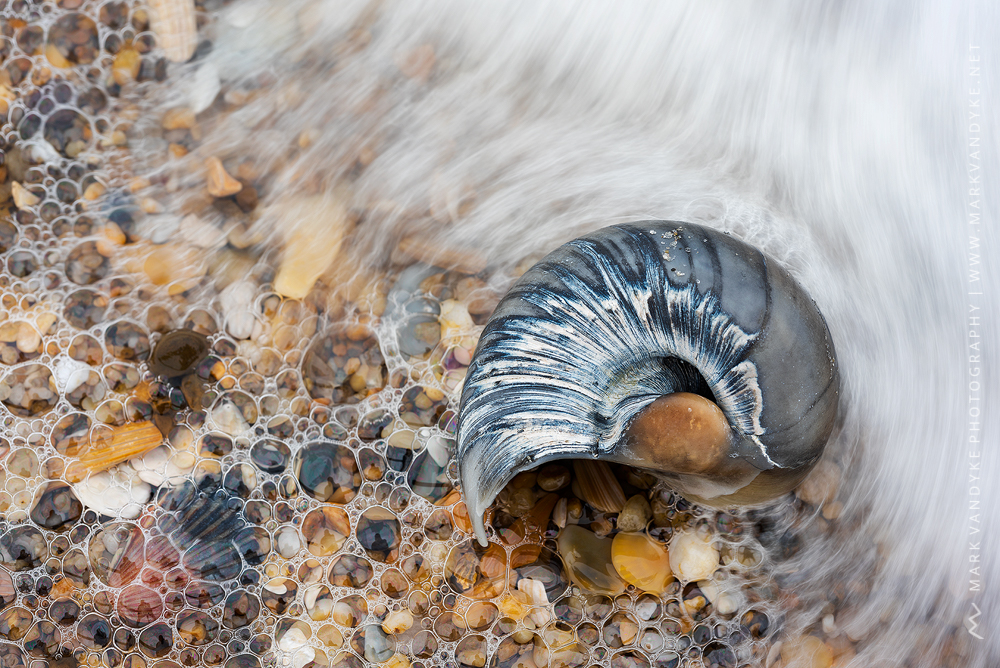One of the neatest things about beachcombing is the surprising combination of color, pattern and shape of individual shells. Winter is the perfect time to beachcomb. Walking keeps you warm and the cold temperatures–and often gusty winds–keep the crowds far from the beach. The result is often better than usual opportunities to catch and release some beautiful seashells! And that’s how I roll. I’m not a collector. I might secure a shell for a couple days in order to photograph it in better conditions. But, for the most part, I always return them to the beach to be found again. Beachcombing is reciprical: I give of my time, effort and attention. In return, I get beauty, discovery, adventure, and creativity. It’s a silent trade that beachcombers know well.
I was immediately intriqued when I found this particular Moon Snail seashell. My sister and I were doing our morning walk. There’s simply no activity that yields greater value behind the lens, in my opinion, than putting one foot in front of the other. Rinse and repeat. Each tidal cycle brings the opportunity for new discoveries, as well as shapes and reshapes the contours of the beach. The coast is dynamic. Everything is fleeting. Here and then gone. Tidal pools, wave interactions, shells, sand patterns: you’re either in position to witness whatever is happening, or you’re not. Walking–paying attention and being outside–is the secret sauce for me.
I don’t always pick up Moon Snail shells. They’re relatively common on Cape Hatteras National Seashore. The thickened, globular shapes of their shells allow better-than-normal survival rates when traveling through the rough surf. Other shells are often broken in the process. The front of this Moon Snail shell was unremarkable. Broken. I was immediately taken, however, by the artfully scratched patterns on the backside. I cannot imagine the situation(s) that resulted in these particular patterns.
Moon Snails (Neverita duplicata) are predatory carnivores. They drill small holes into the shells of their prey. I’m not sure if this particular shell is actually a Shark-Eye or some variation of the many Moon Snails that are often found along Cape Hatteras National Seashore (feel free to chime in if you’re a shell expert!). The front of these shells are marked by beautiful whorls that culminate in an eye-like point. The spirals are similar to tree rings in that they represent the growth of the snail over time.
I always like to situate shells near the ocean. The heft and shape of these beautiful shells make photographing them in small surf possible. This photo is even a selfie! Do you see my reflection in the many little bubbles atop the shell hash?
Camera: Nikon D810
Lens: Nikkor 60mm micro f2.8 @ 60mm
Tripod: Really Right Stuff TVC-33
Date taken: January 27, 2019
Settings: f16, 1/13 second, iso-64


0 Comments